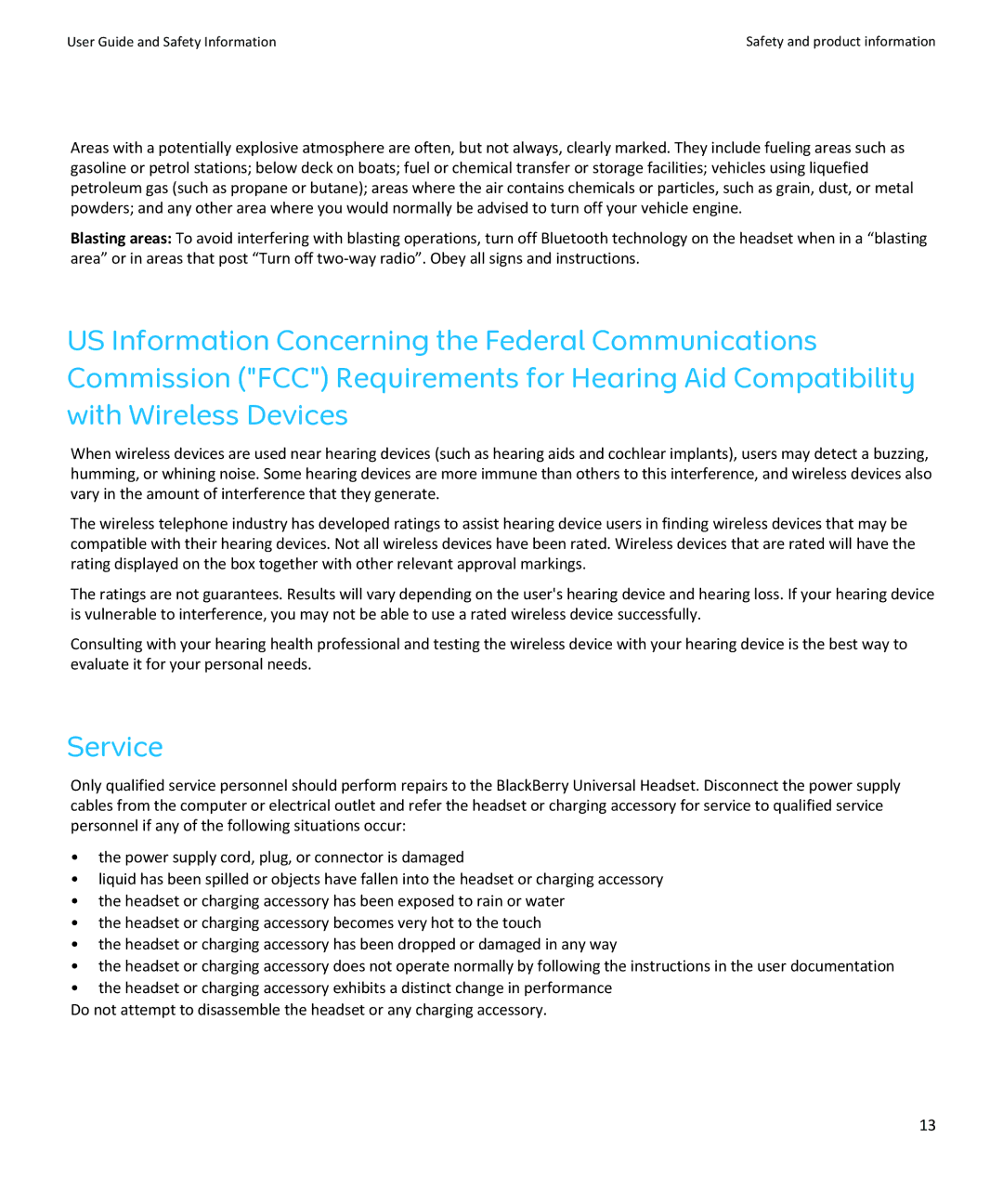User Guide and Safety Information | Safety and product information |
Areas with a potentially explosive atmosphere are often, but not always, clearly marked. They include fueling areas such as gasoline or petrol stations; below deck on boats; fuel or chemical transfer or storage facilities; vehicles using liquefied petroleum gas (such as propane or butane); areas where the air contains chemicals or particles, such as grain, dust, or metal powders; and any other area where you would normally be advised to turn off your vehicle engine.
Blasting areas: To avoid interfering with blasting operations, turn off Bluetooth technology on the headset when in a “blasting area” or in areas that post “Turn off
US Information Concerning the Federal Communications Commission ("FCC") Requirements for Hearing Aid Compatibility with Wireless Devices
When wireless devices are used near hearing devices (such as hearing aids and cochlear implants), users may detect a buzzing, humming, or whining noise. Some hearing devices are more immune than others to this interference, and wireless devices also vary in the amount of interference that they generate.
The wireless telephone industry has developed ratings to assist hearing device users in finding wireless devices that may be compatible with their hearing devices. Not all wireless devices have been rated. Wireless devices that are rated will have the rating displayed on the box together with other relevant approval markings.
The ratings are not guarantees. Results will vary depending on the user's hearing device and hearing loss. If your hearing device is vulnerable to interference, you may not be able to use a rated wireless device successfully.
Consulting with your hearing health professional and testing the wireless device with your hearing device is the best way to evaluate it for your personal needs.
Service
Only qualified service personnel should perform repairs to the BlackBerry Universal Headset. Disconnect the power supply cables from the computer or electrical outlet and refer the headset or charging accessory for service to qualified service personnel if any of the following situations occur:
•the power supply cord, plug, or connector is damaged
•liquid has been spilled or objects have fallen into the headset or charging accessory
•the headset or charging accessory has been exposed to rain or water
•the headset or charging accessory becomes very hot to the touch
•the headset or charging accessory has been dropped or damaged in any way
•the headset or charging accessory does not operate normally by following the instructions in the user documentation
•the headset or charging accessory exhibits a distinct change in performance
Do not attempt to disassemble the headset or any charging accessory.
13
